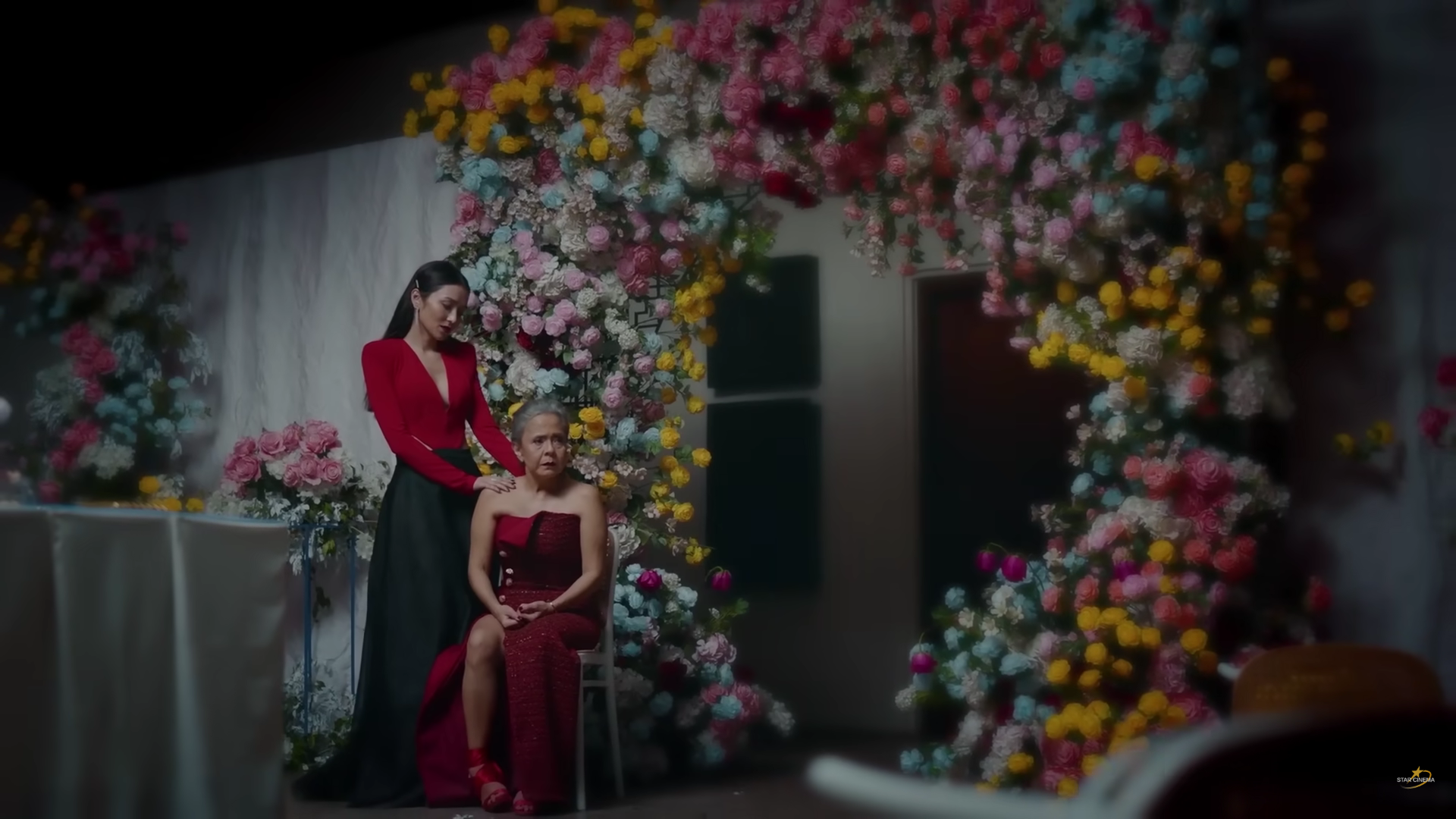SHE IS mother, an icon. She is vengeance.
Directed by Petersen Vargas, A Very Good Girl tells a story of careful revenge and motherhood. When fashion, revenge and motherhood meet, it makes for a classy and bitter tale.
The film starts with Mercy (Kathryn Bernardo), who successfully infiltrates Molly’s (Dolly de Leon) inner circle as the new, platonic daughter. “Mother” Molly is a national treasure and a pop culture icon. However, things come crashing down when Mercy disguises herself as Philo and exposes everyone’s dirty laundry.
Molly’s inner circle of friends dwindles until only Philo remains. Philo’s plans halt when Molly finds out her true identity. After a series of conflicts, Philo returns to Molly for help. Finally, the two let out their deep-rooted hatred and dependency on each other.
The film established clothing and fashion as a central theme from the beginning. Philo and Molly’s first on-screen meeting comes with an all-expense paid shopping spree. A quick wardrobe change later, Philo becomes Mercy again.

Philo is often clothed in red and black. Red is strongly associated with hatred and revenge. She shares the color black with Molly, a symbol of class and grace. The occasional white contrasted the bold colors of Philo’s revenge, signifying her innocence or her acting of it. Her striking outfits are perfect for a wannabe socialite. She stands out in every scene, symbolizing how she does not fit in with the rest of the upper class.
Meanwhile, Molly sticks with a monochromatic palette. Her main color is black. She wore red once, only to remark that she looked like “Shrek’s fairy godmother.” There were only two other instances of her wearing any vibrant colors. The first is blue, a symbol of sadness and loneliness when her friends leave her. The second is a colorful floral pattern when Philo stays with her to heal her wound, which leads her to experience what it is like to be a mother to a daughter.
While not biological, the relationship between Molly and Philo resembles that of a mother-daughter. Philo’s development throughout the film made her increasingly reminiscent of Molly. Slowly, her character started to mirror Molly — who encouraged it. It began with one tap of the “tweet” button and quickly snowballed to a broken bottle pointed at someone’s neck. The more Philo resembled her, the closer their bond became. Until unexpectedly, Molly acted like an actual mother.

The film’s soundtrack further accentuated Molly’s class, perfectly mirroring her grace and pretentiousness. The sound design perfectly accompanied each moment. Scenes of Philo’s intense intrusive thoughts were deafening to the watcher, increasing the tension in the cinema before dropping it back down to reality.
Accompanying the soundtrack is a set of aesthetically pleasing and thematic angles and shots that perfectly set the tone for each scene. Every scene of Philo looking over the city from her balcony was beautifully framed. Each time she stepped on that balcony, it reminded the viewers how the conflict dwarfed the protagonists.
The story managed to strike a balance between its intense scenes and its dark humor. It never felt like humor was used as a crutch to keep the plot interesting. The slang “mother” was not only timely but also fitting to the plot. It is only a matter of how this will age once the slang loses its usage.

A Very Good Girl’s stacked cast set it up for high standards and delivered. Perhaps it could have benefited from a longer run time. The story told in its run was tense, tragic and complex. Molly was not the kind and caring image one would expect of the title “mother.” She is manipulative and scheming.
As they say, the apple does not fall too far from the tree as Philo slowly begins to mirror her. Though not biological, Molly raised Philo to be like her. Ultimately, it is up to Philo to break free from her mother. The relationship between mother and daughter paints an undercoat of teachings. No matter how dark the color is, it does not fully dictate the final picture. F



